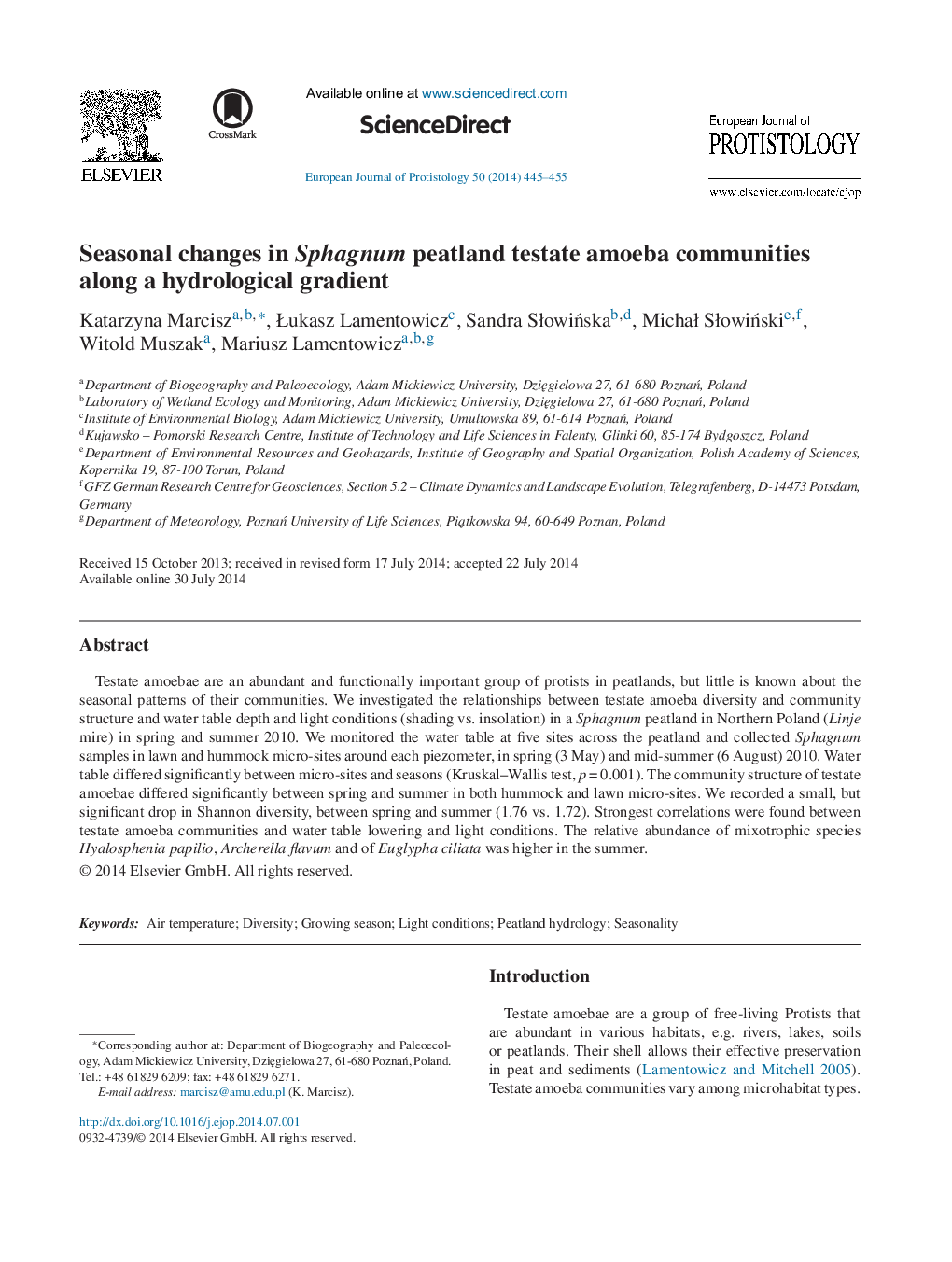| Article ID | Journal | Published Year | Pages | File Type |
|---|---|---|---|---|
| 8383073 | European Journal of Protistology | 2014 | 11 Pages |
Abstract
Testate amoebae are an abundant and functionally important group of protists in peatlands, but little is known about the seasonal patterns of their communities. We investigated the relationships between testate amoeba diversity and community structure and water table depth and light conditions (shading vs. insolation) in a Sphagnum peatland in Northern Poland (Linje mire) in spring and summer 2010. We monitored the water table at five sites across the peatland and collected Sphagnum samples in lawn and hummock micro-sites around each piezometer, in spring (3 May) and mid-summer (6 August) 2010. Water table differed significantly between micro-sites and seasons (Kruskal-Wallis test, p = 0.001). The community structure of testate amoebae differed significantly between spring and summer in both hummock and lawn micro-sites. We recorded a small, but significant drop in Shannon diversity, between spring and summer (1.76 vs. 1.72). Strongest correlations were found between testate amoeba communities and water table lowering and light conditions. The relative abundance of mixotrophic species Hyalosphenia papilio, Archerella flavum and of Euglypha ciliata was higher in the summer.
Related Topics
Life Sciences
Agricultural and Biological Sciences
Agricultural and Biological Sciences (General)
Authors
Katarzyna Marcisz, Åukasz Lamentowicz, Sandra SÅowiÅska, MichaÅ SÅowiÅski, Witold Muszak, Mariusz Lamentowicz,
